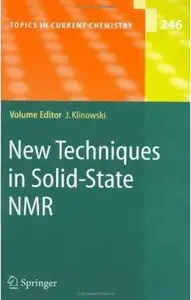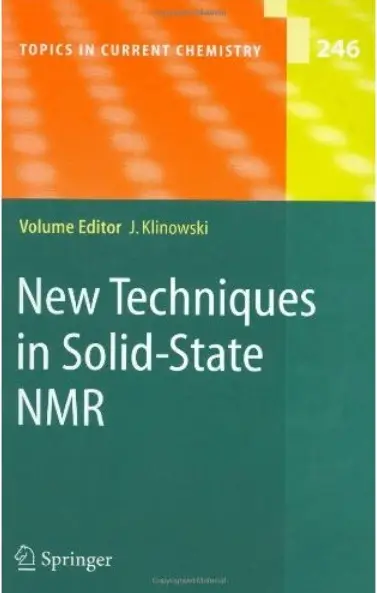New Techniques in Solid-State NMR (Topics in Current Chemistry) by Jacek Klinowski
English | 2005 | ISBN: 3540221689 | PDF | 368 pages | 22,4 MB
English | 2005 | ISBN: 3540221689 | PDF | 368 pages | 22,4 MB
After the discovery of nuclear magnetic resonance, [1, 2] the new spectroscopy was used for the study of 1H nuclei in liquids, but then the signal from copper in the receiver coil itself, the first observation of NMR in the solid state, was found.“Wide-line NMR”,named thus because of the line-broadening effects of dipolar interaction and chemical shift anisotropy, was not far behind, and soon led to significant advances through the analysis of spectral lineshapes.
In this way Richards and Smith [3] demonstrated the presence of H3O+ cations in solid hydrates of strong acids, while Andrew and Eades [4] investigated the details of molecular motion in three solid benzenes. Even now, 50 years later, it is difficult to think of a technique which would provide a more convincing demonstration of the reality of these effects. The development of magic angle spinning (MAS)[5, 6] initiated a new era in the structural study of solids, greatly enhancing our knowledge of a wide range of materials encountered in chemistry, physics, biology, earth sciences and technology. The introduction of Fourier-transform NMR, [7] cross-polarization [8] and high-field superconducting magnets, improved the sensitivity of the spectra.MAS was combined with cross-polarization for 13C NMR of organics, [9] and this approach greatly contributed to the study of 29Si and 27Al in molecular sieve catalysts, minerals and many other materials.High-resolution spectra of solids are now routinely obtained using a combination of MAS and cross-polarization.
However, MAS does not eliminate the quadrupolar interaction, and since 74% of all magnetically active naturally occurring isotopes are quadrupolar, the main effort in solid-state NMR is now directed towards methods for the observation of high-resolution spectra of such nuclei. Springer, the publishers of this volume, originally asked me to edit a book on advances in magic-angle spinning. Aware that, while there have been significant advances in MAS itself, strategies developed for increasing the resolution of NMR spectra almost invariably combine MAS with various radiofrequency pulse trains, I invited several leading modern practitioners of solidstate NMR to describe their recent work. I am grateful to them for their contributions, and I hope that the volume will be of interest to readers in various fields involving the physics and chemistry of solids.



